Photos of Neptune, The Mysterious Blue Planet
Orbits of Neptune Moons
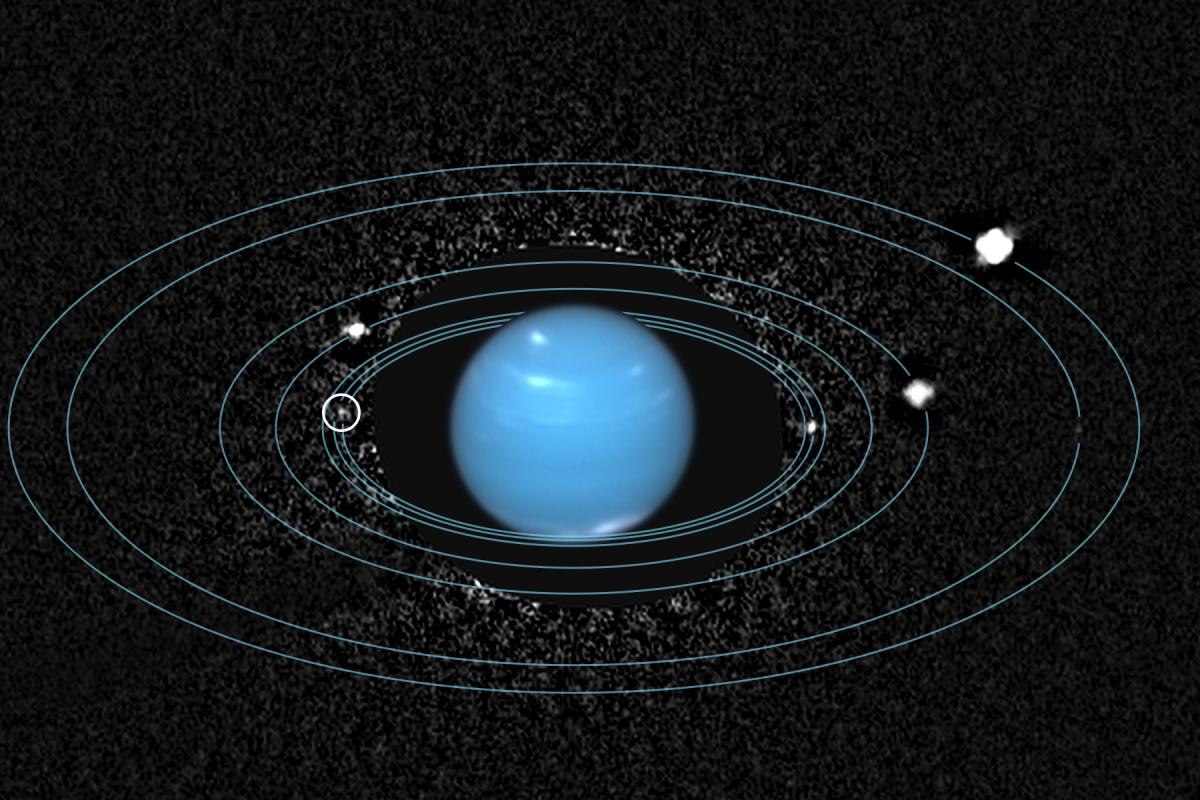
The orbits of all seven inner moons of Neptune are indicated by blue lines. The next moon, Triton, is much further out and much larger than any of these small objects, which range from 20 km to 400 km in diameter. Image released Oct. 8, 2013. [Read the Full Story Here]
Neptune's Ring Arcs Labelled
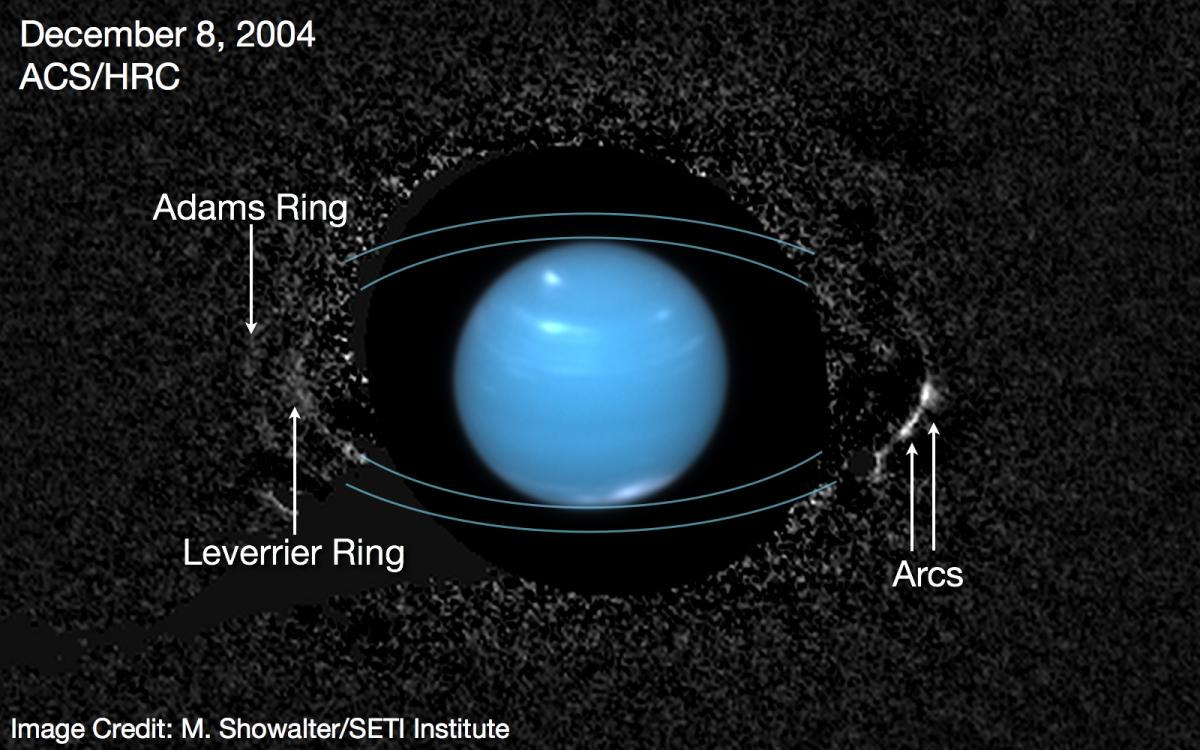
The images were obtained by the High Resolution Channel of the Advanced Camera for Surveys on the telescope. An occulting mask was placed in front of Neptune to reduce the planet's glare. In the image, a color composite of Neptune, taken one month earlier, has been inserted for context. Image released Oct. 8, 2013. [Read the Full Story Here]
Neptune in Infrared Light
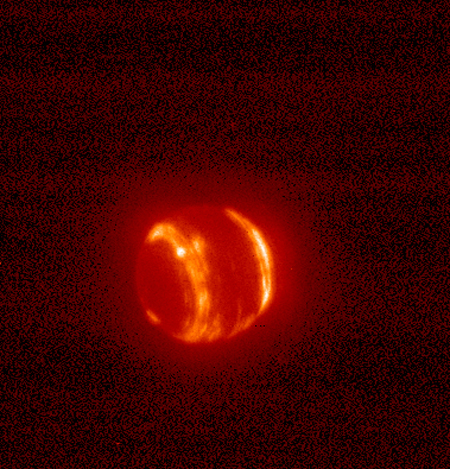
A shot of faraway Neptune in infrared light, captured using the adaptive optics system at Hawaii's Keck Observatory.
Neptune's Anniversary Portraits
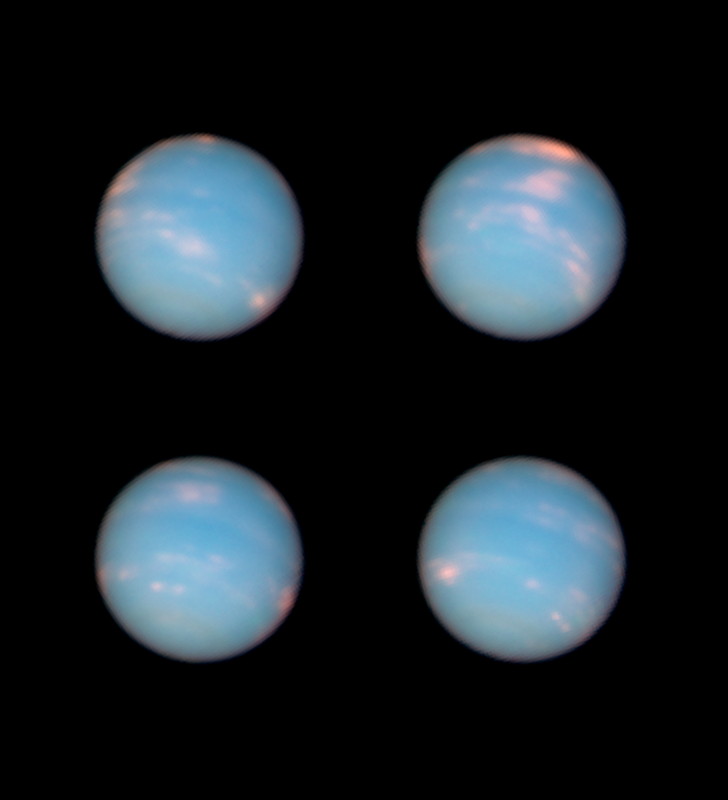
These four Hubble images of Neptune were taken with the Wide Field Camera 3 on June 25-26, 2011, during the planet's 16-hour rotation. The snapshots were taken at roughly four-hour intervals, offering a full view of the planet. The images reveal high-altitude clouds in the northern and southern hemispheres. The clouds are composed of methane ice crystals.
Orbits of Neptune Moons Labelled

This version of the image identifies all of the bodies orbiting Neptune visible in the image. Note that even the newly-discovered moon, provisionally identified as S/2004 N 1, is visible here as a faint dot. Image released Oct. 8, 2013. [Read the Full Story Here]
Neptune's Lost Inner Moon, Naiad
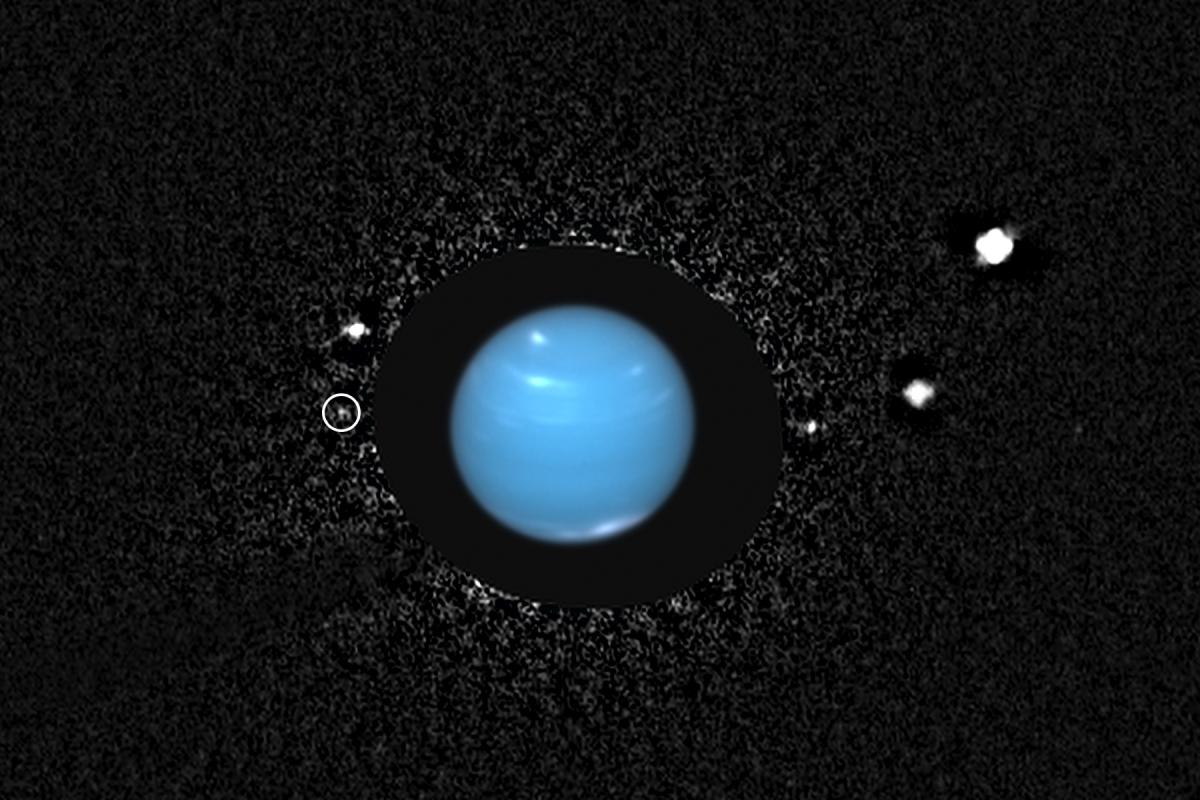
Neptune's innermost moon, Naiad, is clearly seen here for the first time since the Voyager 2 flyby of 1989. Naiad is the encircled point of light just to the left of Neptune. Image released Oct. 8, 2013. [Read the Full Story Here]
Neptune at 23:09 UT, June 25, 2011
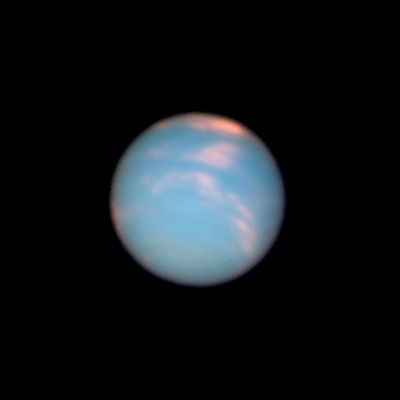
On June 25, 2011, Neptune arrived at the same location in space where it was discovered 165 years earlier. To commemorate the event, NASA's Hubble Space Telescope took "anniversary pictures" of the blue-green giant planet.
Get the Space.com Newsletter
Breaking space news, the latest updates on rocket launches, skywatching events and more!
Neptune's Ring Arcs
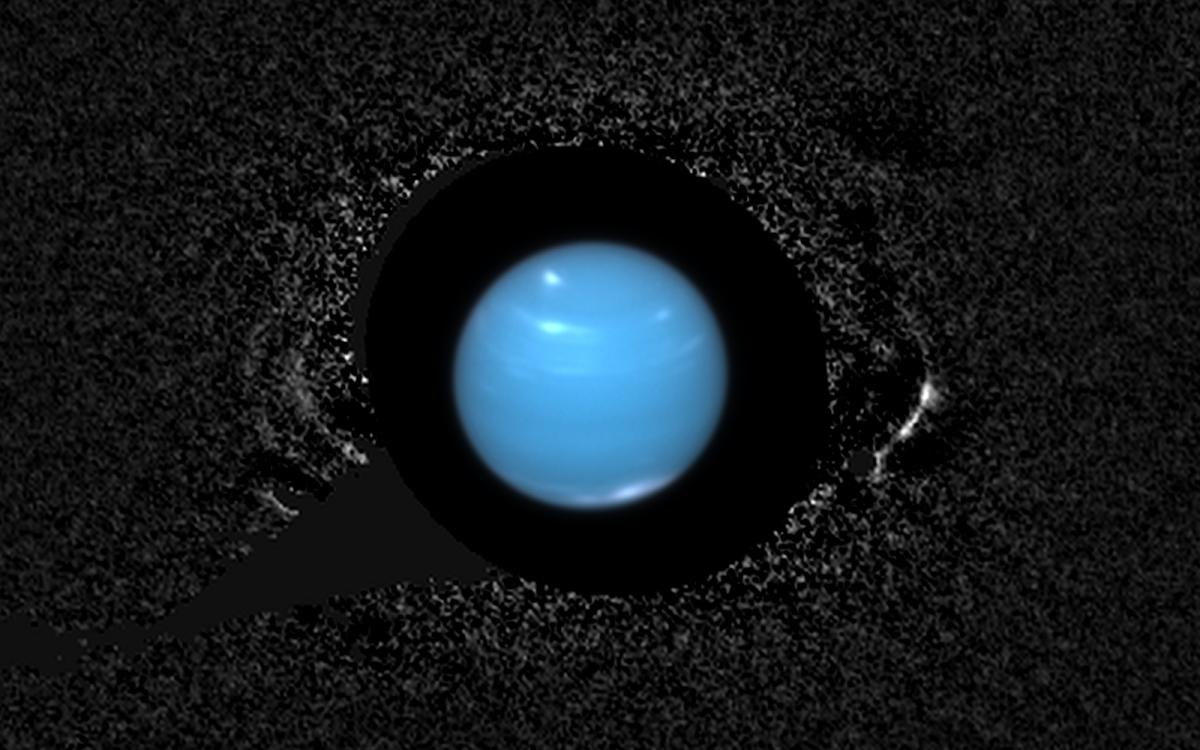
Neptune's slender rings are seen with remarkable clarity in this composite image taken by the Hubble Space Telescope. Image released Oct. 8, 2013. [Read the Full Story Here]
Neptune and Its Moon Triton
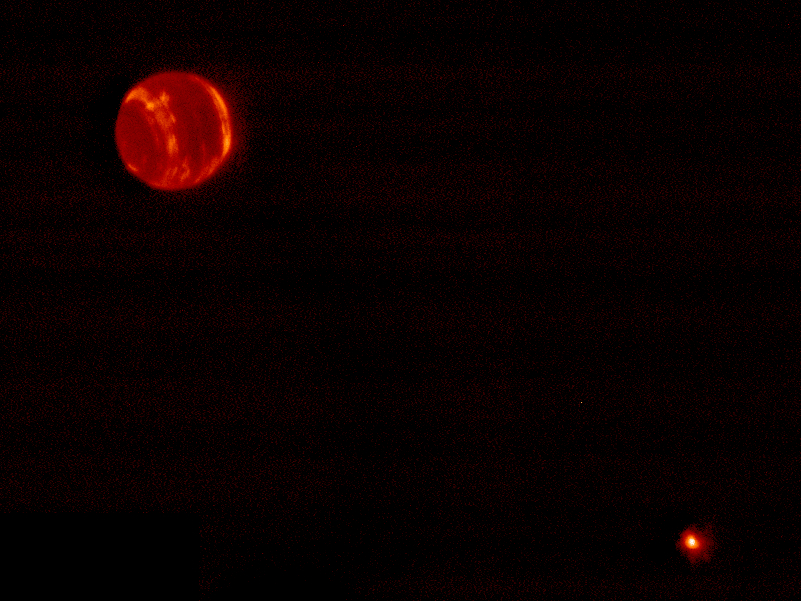
This shot, taken in infrared light using the adaptive optics system at Hawaii's Keck Observatory, shows Neptune and its moon Triton (lower right).
Neptune's Ring Arcs Marked
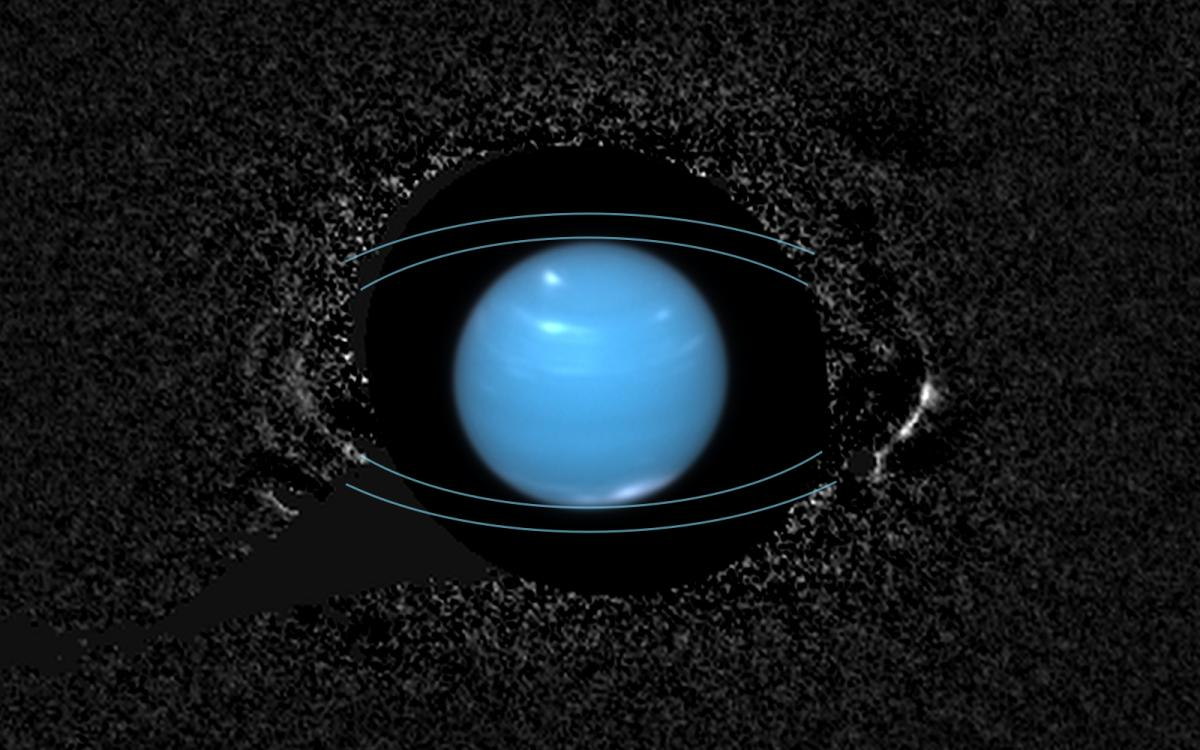
The outer ring, Adams, shows two distinct bright segments or "arcs" to the right of Neptune. Image released Oct. 8, 2013. [Read the Full Story Here]
Inner Moons of Neptune
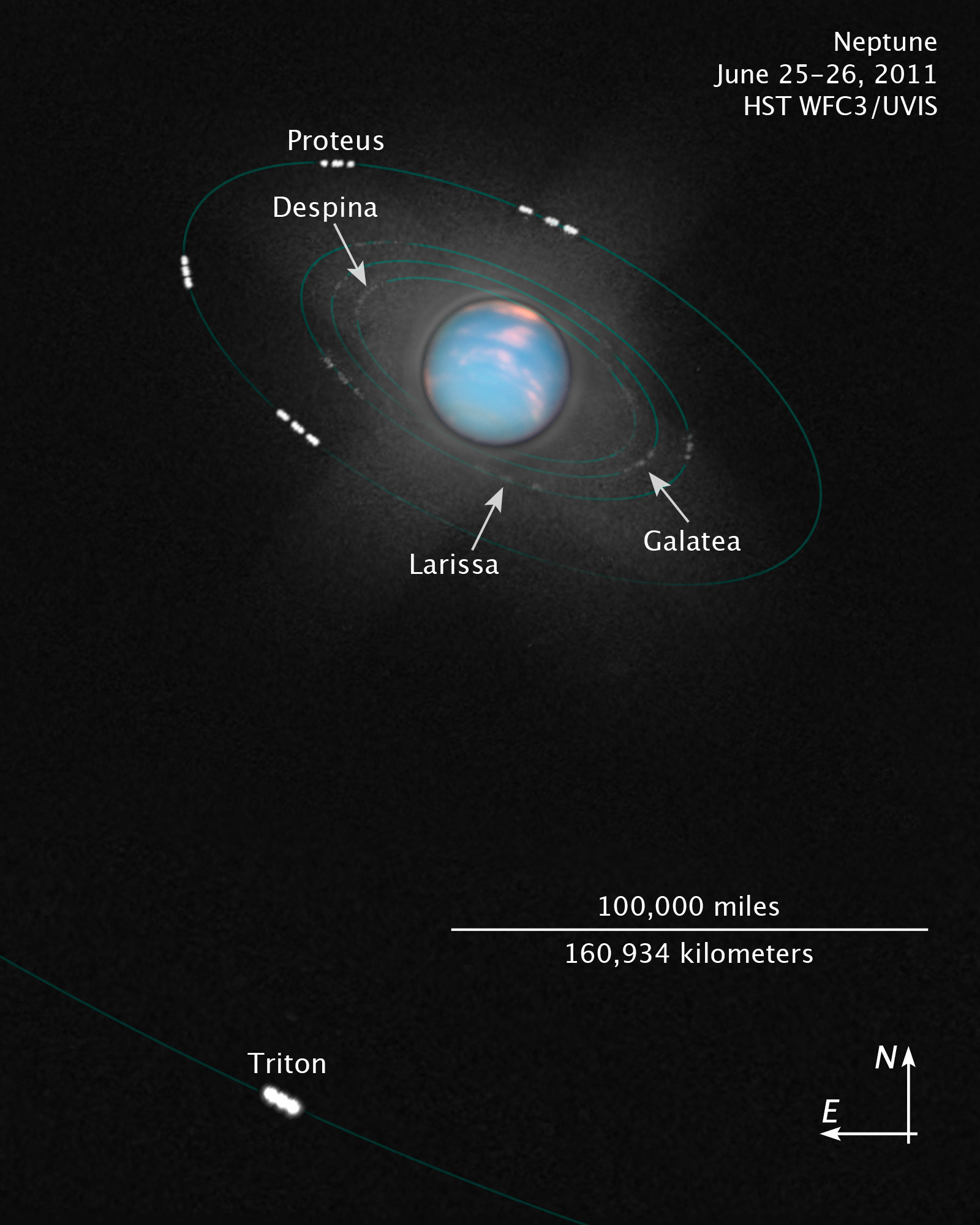
A color image composed of exposures made through three color filters shows the disk of Neptune, revealing clouds in its atmosphere. Forty-eight individual images from a single filter were brightened to reveal the very faint moons and composited with the color image. Triton, in the lower left corner, is the brightest of the moons seen in these images, farthest from the planet, and moves in a counter-clockwise sense in this view.
Join our Space Forums to keep talking space on the latest missions, night sky and more! And if you have a news tip, correction or comment, let us know at: community@space.com.

Space.com is the premier source of space exploration, innovation and astronomy news, chronicling (and celebrating) humanity's ongoing expansion across the final frontier. Originally founded in 1999, Space.com is, and always has been, the passion of writers and editors who are space fans and also trained journalists. Our current news team consists of Editor-in-Chief Tariq Malik; Editor Hanneke Weitering, Senior Space Writer Mike Wall; Senior Writer Meghan Bartels; Senior Writer Chelsea Gohd, Senior Writer Tereza Pultarova and Staff Writer Alexander Cox, focusing on e-commerce. Senior Producer Steve Spaleta oversees our space videos, with Diana Whitcroft as our Social Media Editor.









